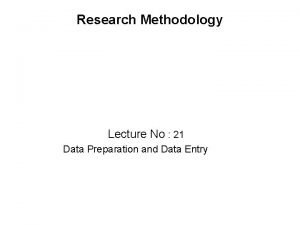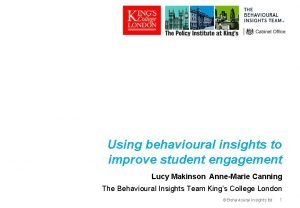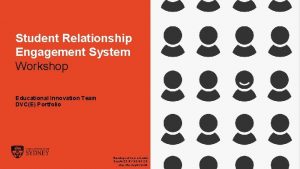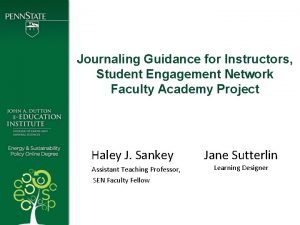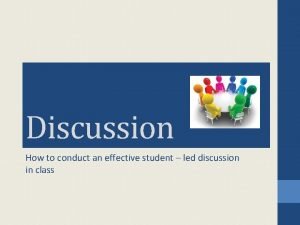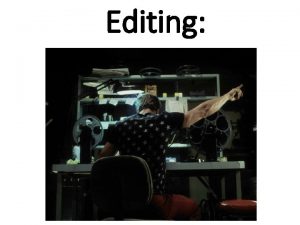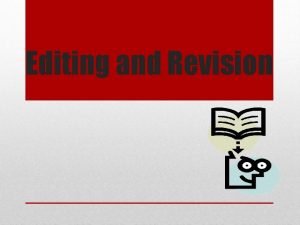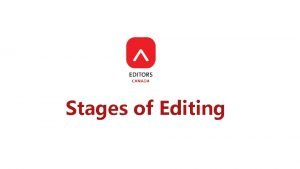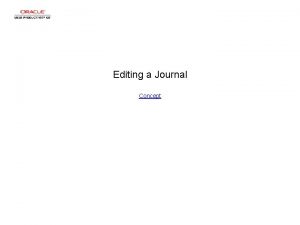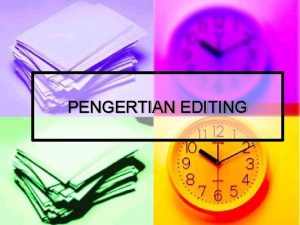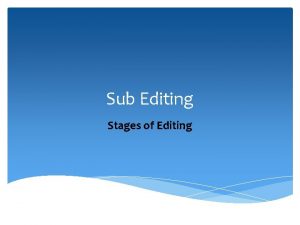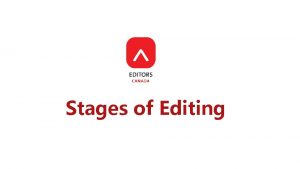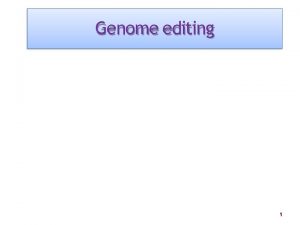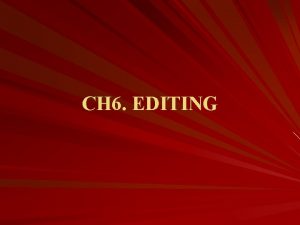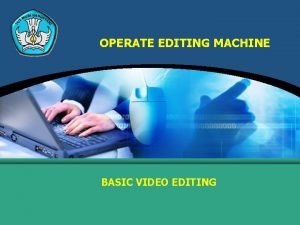Student Engagement in the Assignment Editing Process USING













- Slides: 13

Student Engagement in the Assignment Editing Process USING PRACTICE ESSAY SELF-CORRECTION VIDEOS TO MOTIVATE STUDENTS LYNDON DE VALLE AND MARK BROADBENT UNSW GLOBAL LANGUAGES

Using engaging content “If the content does not shake their prior beliefs, they file away the fascinating facts in the deepest recesses of their brain, if at all. ” John Hattie (1999) Professor of Education Auckland University

Cognitive Theory of Multimedia Learning (Richard Mayer, 2003) People learn more deeply from words AND pictures Dual-coding Each of these channels has a finite amount of information it can process at one time Cognitive load theory Message – Create videos and teach in light of how the minds of our students work

Direct Instruction (Siegfried Engelmann & Walter C. Becker - 1964) Explicit teaching of a skill-set using a lecture/demonstration Can be under-valued by those who prefer inquiry-based learning Highly structured, but also interactive Effectiveness supported by a wide body of research Builds self-esteem Considers the way the human mind processes information constructively i. e patterns, templates etc.

Is there a difference between laziness or apathy, and avoidance behavior? Try to see our students’ mental processes How is their reward system primed? What motivates them? What things do they avoid? How will they develop INTO a growth mindset? Growth is not merely intellectual but also experiential Growth acknowledges brain plasticity Growth is incremental i. e. small positive experiences and successes build confidence and GROWTH proficiency Growth values processes over results

Learning events Out of the ordinary – something special Drama – (situation, problem) - participation A reveal – a sense of expectation Experiential outcomes Reflection The video is not the event! The teacher is not the performer!

Lesson planning Activity Aim: To affirm expectations of quality in students and practice an effective editing process Learning event Team-teaching to a video that asks students to participate and practice the editing process

Why use a video in the classroom? To facilitate a ‘learning event’ Enshrined knowledge Transitory nature Student need to be actively involved to get the learning experience Dynamic modelling – process (not product) Can be reviewed later online

Why show a video of a teacher? A third voice in the classroom A standardized message Team teaching to a video Monitoring Encouraging Commentating Highlighting Annotating on the board

Learning Schema Learning event Team-teaching to a video Process learning Students are editing an essay they have been working on Incremental growth (feedback and rewards) Multi-dimensional feedback (video, Turnitin, teacher) Developing a new mindset Learning outcome (c. w. graduate capabilities)

Video Production Stages 1. Script writing and editing (4 hours): draft written and edited by a number of staff members for clarity of instruction and to fit time limits. 2. Slide Design (3 hours): Text animated to synchronise with instructions 3. Video shoot (2 hours): Script recorded onto video file in studio with use of green screen. 4. Video editing (2 hours): Video file edited and slides added. 5. Uploading (30 minutes): Final product checked and uploaded to the UNSW ‘Box' and links put in Moodle

Further reading/viewing The Australian Society for Evidence Based Teaching (2014) The myths and facts about Direct Instruction http: //www. evidencebasedteaching. org. au/direct-instruction-facts-myths/ Hattie, J. (1999) Influences on Student Learning - Inaugural lecture, University of Auckland https: //cdn. auckland. ac. nz/assets/education/hattie/docs/influences-onstudent-learning. pdf Khan Academy (2016) Reward pathway in the brain https: //www. youtube. com/watch? v=Yz. CYu. KX 6 zp 8 Inform. ED (2015) 25 Ways to Develop a Growth Mindset https: //www. opencolleges. edu. au/informed/features/develop-a-growthmindset/ Wikiversity (2018) Cognitive Theory of Multimedia https: //en. wikiversity. org/wiki/Cognitive_Theory_of_Multimedia_Learning

Discussion Review the samples and comment on the outcomes and process described. How can we keep evolving the activity? Do you have teaching points or activities that could use a team teaching video? Do you have any ideas for creating learning events?
 Central editing in research methodology
Central editing in research methodology Linear and nonlinear editing
Linear and nonlinear editing Student engagement insight
Student engagement insight Innovation workshop sydney
Innovation workshop sydney Australasian survey of student engagement
Australasian survey of student engagement Student engagement data collection
Student engagement data collection Student engagement presentation
Student engagement presentation Student engagement network
Student engagement network Student-led discussion assignment
Student-led discussion assignment How _________ your last weekend?
How _________ your last weekend? What did you do in london last weekend
What did you do in london last weekend Clearinghouse student tracker
Clearinghouse student tracker Class maths student student1 class student string name
Class maths student student1 class student string name National student clearinghouse student tracker
National student clearinghouse student tracker
